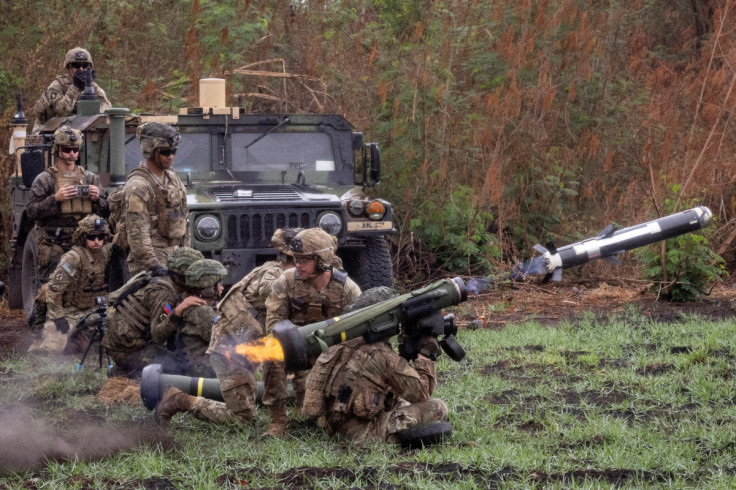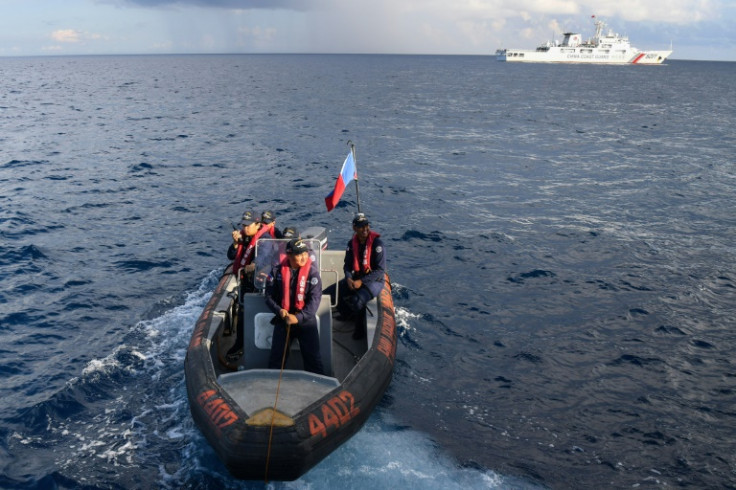US Details How It Would Defend Philippines Against Beijing, South China Sea Attack

KEY POINTS
- The U.S. released its defense guidelines for defending the Philippines from armed attacks.
- The U.S. and the Philippines plan to counter grey-zone tactics and other warfare in the disputed waters
- A retired Philippine Navy official said the guidelines serve as a warning to China
The U.S. has issued guidelines on defending the Philippines from armed external attacks, including in the highly-disputed South China Sea.
It is the first time the U.S. has laid out the extent of its defense commitments to the Philippines since the creation of the Mutual Defense Treaty (MDT) in 1951.
In the six-page document provided by the Department of Defense, dubbed "The United States and the Republic of the Philippines Bilateral Defense Guidelines," the two allied countries vowed to defend each other in the event of an armed attack in the Pacific and South China Sea.
"An armed attack in the Pacific, to include anywhere in the South China Sea, on either Philippine or U.S. armed forces – which includes both nations' Coast Guards – aircraft, or public vessels, would invoke mutual defense commitments under Article IV and Article V of the MDT," the document stated.
Both countries must also confirm and consult each other whenever imminent threats arise, according to the guidelines.
While the document did not mention China, the U.S. and the Philippines vowed to cooperate and counter any grey-zone tactics and other forms of warfare in the region.
The guidelines also noted the importance of the 2016 Arbitral Award on the South China Sea and the U.N. Convention on the Law of the Sea in upholding the freedom of navigation and overflight in the disputed waters.
Ret. Rear Adm. Rommel Ong, the former vice commander of the Philippine Navy, told Reuters that the defense guidelines serve as a "warning" to China not to target Philippine naval ships.
Julio Amador, the head of the Manila-based think tank Foundation for the National Interest, echoed Ong's views, saying that the document would "give China some pause."
The guidelines were released amid the official visit of Philippine President Ferdinand Marcos Jr. to the U.S. this week, which included meetings with President Joe Biden, Vice President Kamala Harris and Defense Secretary Lloyd Austin III.
In the joint statement provided by the White House, Biden reaffirmed the U.S.'s "ironclad alliance commitments" to one of the closest allies in Asia.
Biden and Marcos also welcomed the identification of new sites under the Enhanced Defense Cooperation Agreement, which allows the U.S. military to access key Philippine military bases.
"[EDCA] will strengthen Philippine security and support the Armed Forces of the Philippines' modernization goals, while driving U.S. investment to local communities across the Philippines," according to the joint statement.
Meanwhile, Marcos and Austin vowed to support combined maritime activities, such as joint patrols in the South China Sea, "to support the Philippines' lawful exercise of its rights," according to the Pentagon.
Austin also commended the recently-concluded annual U.S.-Philippines joint military exercise "Balikatan" last month, which was participated by more than 17,000 soldiers, the largest military drill so far.

© Copyright IBTimes 2024. All rights reserved.












